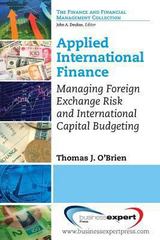Answered step by step
Verified Expert Solution
Question
1 Approved Answer
In scenario 1, assuming you have no cash left after period 1, what is the minimum number of bonds must you own to make the

In scenario 1, assuming you have no cash left after period 1, what is the minimum number of bonds must you own to make the required payment in period 2?
Scenario 1 (the main one, focus your attention here) This scenario has one asset and cash. The asset is a bond with face value of $10 that pays interest annually of 5% and is due at the end of the end of two years (e.g. at the end of year 1 makes an interest payment and at the end of year 2, makes an interest payment and also returns the principal amount of $10). You run an annuity company that has promised payments to customers of $100 one year from now and $100 two years from now (periods 1 and 2 respectively). You will start the game either cash heavy or bond heavy, and need to figure out how to maximize the value of your portfolio while also making both payments. Important notes: 1) there is only one round of trading in this game (think year 0, or today). 2) The "face value" or "principal of a bond is the amount used to calculate interest. In the trading round, the price can deviate from the face value. 3) Carries over each period, but at a return of 0%. This applies to any cash you have at the end of year 1 as well. The score will be calculated as follows: if you make both payments, you receive the total value of your portfolio (including the payments). If you miss either payment, the company is forced to liquidate its bond holdings, you receive a score equal to your cash, and 12 the face value of your bonds. Hint: Write a timeline! Figure out how much of each cash/bonds you need to have to meet the minimum payment, then trade to maximize. Scenario 1 (the main one, focus your attention here) This scenario has one asset and cash. The asset is a bond with face value of $10 that pays interest annually of 5% and is due at the end of the end of two years (e.g. at the end of year 1 makes an interest payment and at the end of year 2, makes an interest payment and also returns the principal amount of $10). You run an annuity company that has promised payments to customers of $100 one year from now and $100 two years from now (periods 1 and 2 respectively). You will start the game either cash heavy or bond heavy, and need to figure out how to maximize the value of your portfolio while also making both payments. Important notes: 1) there is only one round of trading in this game (think year 0, or today). 2) The "face value" or "principal of a bond is the amount used to calculate interest. In the trading round, the price can deviate from the face value. 3) Carries over each period, but at a return of 0%. This applies to any cash you have at the end of year 1 as well. The score will be calculated as follows: if you make both payments, you receive the total value of your portfolio (including the payments). If you miss either payment, the company is forced to liquidate its bond holdings, you receive a score equal to your cash, and 12 the face value of your bonds. Hint: Write a timeline! Figure out how much of each cash/bonds you need to have to meet the minimum payment, then trade to maximizeStep by Step Solution
There are 3 Steps involved in it
Step: 1

Get Instant Access to Expert-Tailored Solutions
See step-by-step solutions with expert insights and AI powered tools for academic success
Step: 2

Step: 3

Ace Your Homework with AI
Get the answers you need in no time with our AI-driven, step-by-step assistance
Get Started


